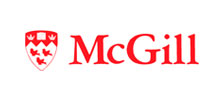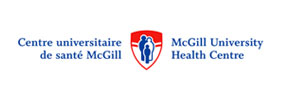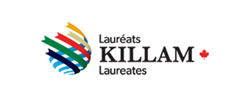“BELIEVE IN LIFE”: AN EPILEPSY PATIENT REMEMBERS TREATMENT AT THE NEURO

As a diplomat’s daughter, Norah Almanqour grew up trying to fit in. Wherever her father was posted, she was determined to make friends and learn the language. Needing to meet local children in Tokyo at age 5, she pedalled her bike to the neighbourhood park; four years later, she started all over again in Sweden. But when she blacked out at a swim class there, she discovered she had epilepsy – and wondered whether her dream of a normal life was over. Boys began to tease her. Later, in university, strangers tried to keep her from biting her tongue during convulsions by wedging a fork in her mouth. She woke up bleeding on her shirt. “I just wanted the ground to open and swallow me.”
By 23, Norah needed to find out if she had any hope of a cure. She travelled to Montreal and spent her summer undergoing medical tests at the Montreal Neurological Institute and Hospital – The Neuro. Norah had never met other people with seizures: patients came from around the world in search of treatment at the top-notch facility. “No matter how tiring the tests were, I looked forward to 9 o’clock with the other patients,” Norah recalls. They gossiped about their worst seizure experiences, responding to each other’s occasional attacks with friendly jokes. “The weeks of tests there changed my thoughts so much about epilepsy,” she says. “I wasn’t ashamed anymore.”
Norah was a good candidate for surgery, and on July 12, 1984, she entered the operating room. Because the scalpels would pass close to the part of the brain that controlled her speech, she had to stay awake to answer questions for almost half of the 11-hour procedure. Any time the pain became unbearable, she could squeeze the hand of one of the physicians.
It would take a year before Norah knew whether her surgery was a success. At first she was unable to form words: her brain needed time to heal from the painful swelling around her speech centres. It took three months back home in England before she regained all her vocabulary. By June 1985, Norah’s headaches had retreated, and she was able to climb on a bike for the first time since childhood. “The wind was blowing against my hair, the sun shining and the sounds of the birds flying,” she remembers. “It just made me feel as if I’m one of them.”
The doctors pronounced her epilepsy cured. Norah has stayed in touch with the The Neuro, and on her last visit in November 2008, she was wowed by the changes that greeted her. Rooms are more private; brain imaging is performed by state-of-the-art machines in airy, soundproof rooms. Today, the only sign that Norah once had epilepsy is a thin piece of metal just under the skin at her hairline. She affirms that for those who can benefit from healing surgery at The Neuro, it is like the “feeling of a bird who can only open her wings, but cannot fly – and discovers she now can finally fly with pride.”





